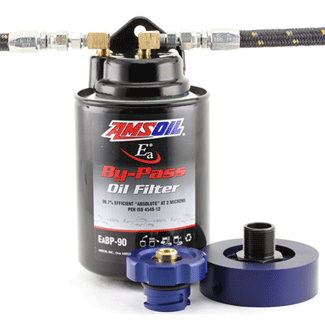One of the most resilient motor-oil myths out there is that motor oil that has turned black is unfit for service and must be changed. You can’t go far on the Internet without running into a shadetree mechanic or self-described expert who repeats this myth as proven fact.
Although it makes sense on the surface, oil color is not an indication of condition. Oil that has turned black may continue to provide good protection and performance. Oil analysis is the only way to tell for sure if the oil has reached the end of its service life.
So, what causes oil to turn black? And what gives it its color when its new in the bottle?

Additives Influence Color
Let’s take the second question first. The oil’s additives influence the final formulation’s color. Some oils are naturally lighter and some are naturally darker depending on chemistry. Signature Series Synthetic Motor Oil, for example, has a slight reddish tint due to its additives.
AMSOIL 0W-20 LS-VW Synthetic European Motor Oil (EZT) has a greenish/blue color due to its unique additives that are required by Volkswagen.* Formulators can also add dye to the lubricant to change its color. Transmission fluid offers the perfect example. Red dye is added to prevent confusion with motor oil.
Some companies dye their oil presumably for marketing purposes. Royal Purple* comes to mind. They get a lot of mileage out of the unique color of their oil. LIQUI MOLY* recently introduced its MolyGen* motor oil that’s dyed fluorescent green. I’m not sure why you’d dye an oil the same color as some coolants, but I’ll leave that discussion for another column.











Comments
AMSOIL Market Manager and product expert.
Share: